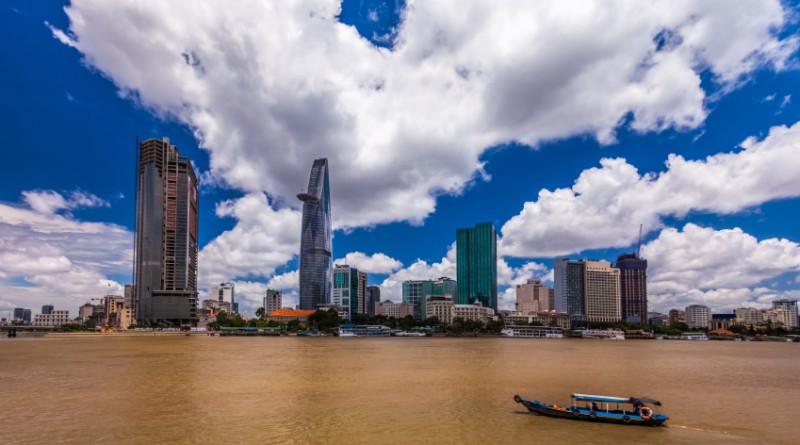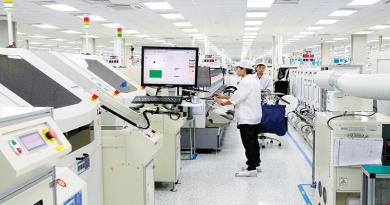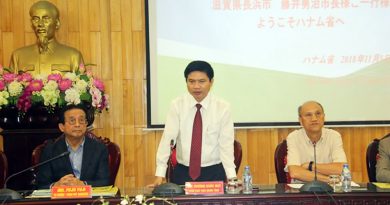Major foreign investors come to Vietnam in early January
The Hanoitimes – In early 2016 many big names have visited Vietnam to look for opportunities in business cooperation or to implement projects.
Netflix Inc. has offered its video-streaming service live in more markets around the globe including Vietnam.
Reed Hastings, co-founder and CEO of Netflix, spoke during a keynote address at the 2016 CES trade show in Las Vegas, Nevada on January 6, 2016.
According to Netflix media center, the world’s leading Internet television network now has more than 70 million members in over 190 countries enjoying over 125 million hours of TV shows and movies per day, including original series, documentaries and feature films.
Customers in Vietnam can register for the service with a monthly fee of VND180,000 ($8) for the basic package, VND220,000 ($10) for the standard package, and VND260,000 ($12) for the premium package, according to the price list posted on Netflix’s website. They can use credit cards including VISA, MasterCard and AMEX to subscribe to the service.
Currently, VOD service is also provided via smartphones, tablets, and set-top-box by local providers including FPT Group for FPTplay, Viettel for NetTV, and VNPT-Media for MyTV. Some firms offer Internet Protocol Television (IPTV) service combined with VOD service for customers in Vietnam.
Galaxy Group and Thien Ngan Studio have invested in developing VOD service under the brand FIM+. Customers can enjoy thousands of copyrighted movies including Vietnamese films released exclusively by FIM+ at cinemas with a six-month fee of VND3 million.
Many websites provide online movie service with thousands of films with monthly fees of VND40,000-50,000. Customers can pay VND100,000 a year for promotion packages.
Singha Asia of Thailand is expected to complete its $1.1 billion investment in Vietnam’s Masan Group. After the transaction, Singha will hold 25% stake in Masan Consumer Holdings and 33.3% stake in Masan Brewery.
Singha Asia is a member of Thailand’s first and largest brewery, Boon Rawd Brewery, founded in 1933. The company owns a number of popular brand names, such as Singha, Leo, B-ing, Purra and Savon. It is seeking to expand and diversify its business into manufacturing, packaging, agriculture, real estate, food and restaurants through over 50 affiliated companies.
Meanwhile, Masan Consumer is an important unit of Masan Group, one of Vietnam’s largest private companies. It has built leading businesses in the food and beverage sector and is the producer of some of Vietnam’s most renowned brands, such as Chin-su, Nam Ngu, Tam Thai Tu, Omachi, Kokomi, Vinacafe, Vinh Hao and Su Tu Trang.
Through the partnership, the two companies expect to expand their market presence in the combined food and beverage industry to the region with a focus on inland ASEAN countries (Vietnam, Thailand, Myanmar, Cambodia and Laos), which have a total consumer base of nearly 250 million.
2016 is forecast to be a busy year for Japan’s 7-Eleven in Vietnam as the group planned to open its first store in Vietnam in March 2017.
According to Nikkei, in July 2015, the group’s US-based subsidiary Seven Eleven Inc. signed a contract with IFB Vietnam, owner of Pizza Hut’s Vietnamese restaurant chain, to open its first 7-Eleven convenience store in Ho Chi Minh City. The number of establishments is set to reach 100 in the next three years and 1,000 within ten years.
Seven & I Holdings expansion to Vietnam is likely to intensify competition in the retail sector as it coincides with both domestic and foreign retailers’ plans to expand operations in Vietnam.
Industrial experts argued that Seven & I Holdings expansion to Vietnam would change how Fast Moving Consumer Goods (FMCG) manufacturers distribute their products. According to Neilsen’s 2015 report, 80 per cent of FMCG revenue came from traditional retail channels, but Vietnamese consumers were gradually moving away from these channels towards convenience stores.
Being the world’s leading convenience store chain, 7-Eleven is currently present in 16 countries with 56,400 stores worldwide and 15,000 stores in Japan alone. In Southeast Asia, 7-Eleven is present in Singapore, Thailand, Philippines, Indonesia and Malaysia.
The mergers & acquisition market (M&A) also welcomed a boost in the New Year when two big deals were fixed after a long time of seeking appropriate partners.
Hankyung Economic Times of South Korea has just reported that AON Holdings – a Korean financial group – will take control of Vietnam’s tallest building – Keangnam Landmark 72 in Hanoi.
According to Hankyung, on December 16, 2015, Samjong KPMG, which is in charge of selling debts of Keangnam Enterprises, chose AON Holdings as the top priority partner for this deal. The total loan that Keangnam borrowed to build the building in 2012 was 600 billion won ($510 million).
It is rumored that AON Holdings paid about 450 billion won to buy this debt. After the takeover of debts, AON Holdings will take control of this project.
In April last year, South Korean media reported that Goldman Sachs bank and Qatar Investment Authority (QIA) wanted to purchase this building. Specifically, Goldman Sachs planned to buy back the loan of Keangnam at the price of $900 million while QIA would spend $800 million for this affair.
However, in mid-May the Korea JoongAng Daily, one of the four largest newspapers in South Korea, cited information from QIA as saying that QIA denied that they would purchase the building.
The construction of Landmark Buildings 72, Vietnam’s tallest building, was completed by Keangnam Enterprises in 2011 at the cost US$1.1 billion. This group was nearly incapable of paying the loans that it had borrowed to finance this project.
The company was delisted and has been under the control of creditors since March 2015. Reportedly, lenders eased some conditions for Keangnam thanks to the positive news about the QIA’s negotiation to acquire the building from Keangnam.
Also in early 2016, Metro Vietnam was officially transferred to Berli Jucker (BJC, Thailand) at the cost of 655 million Euro (approximately $879 million).
The transfer includes all 19 wholesale supermarkets and the portfolio of related real estate of Metro Cash & Carry Vietnam worth Euro 655 million (about $879 million) for the Berli Jucker Group (BJC) of Thailand.
In August 2014, Metro Group announced an agreement with BJC, Thailand on this deal. However, it was then rumored that this affair might fail due to the opposition of some BJC shareholders.
The Metro brand came to Vietnam in 2002 with wholesale businesses. Currently Metro Cash & Carry Vietnam has 19 centers across the country with 3,600 employees. In the fiscal year of 2014-2015, its sales in Vietnam reached 507 million euros ($550 million).
BJC said it would keep the name of Metro Vietnam and the development objectives, products or services of Metro.
Berli Jucker is an investment, distribution, marketing and production group of Thailand with a value of about 88 billion Baht ($2.8 billion) on Thai stock market.
A recent analysis by Bloomberg on the growth prospects of 93 economies in the world forecasts that Vietnam will rank second worldwide for growth rate in 2016, with 6.6%, just behind India with 7.4 %.
With this anticipated growth rate, Vietnam’s economy will be the strongest growing economy in Southeast Asia this year, compared with the forecast growth rate for Indonesia of 5.2%, for Malaysia of 4, 5%, Thailand 3.2%, and Singapore 2.3%.
Most recently, the Economist Intelligence Unit (EIU), under the Economist Group, also forecast that Vietnam’s GDP growth will increase 7% this year, ranking ninth among the fastest growing GDP rates in the world.
The EIU expects that emerging nations in Asia will enjoy high GDP growths, including Vietnam, Laos and Cambodia, thanks to personal consumption and tourism.
Earlier, the National Financial Supervisory Commission (NFSC) estimated that Vietnam’s economy may grow 6.7-6.8% in 2016.
By comparing the growth rate of Vietnam with its neighboring economies in Southeast Asia, foreign investors can clearly see the attractiveness of Vietnam.
Deputy Minister of Planning and Investment Dang Huy Dong said Vietnam has the opportunity to stand on the shoulders of giants as it attracts big investors.
Vietnam has the third largest population in Southeast Asia, with more than 60% aged between 15 and 60 and per capita income is on the rise.
As reported by the World Bank (WB), the proportion of population earning less than US$2 a day based on purchasing power parity fell sharply from 86% in 1993 to 12% in 2012.
VNN/Hanoitimes









